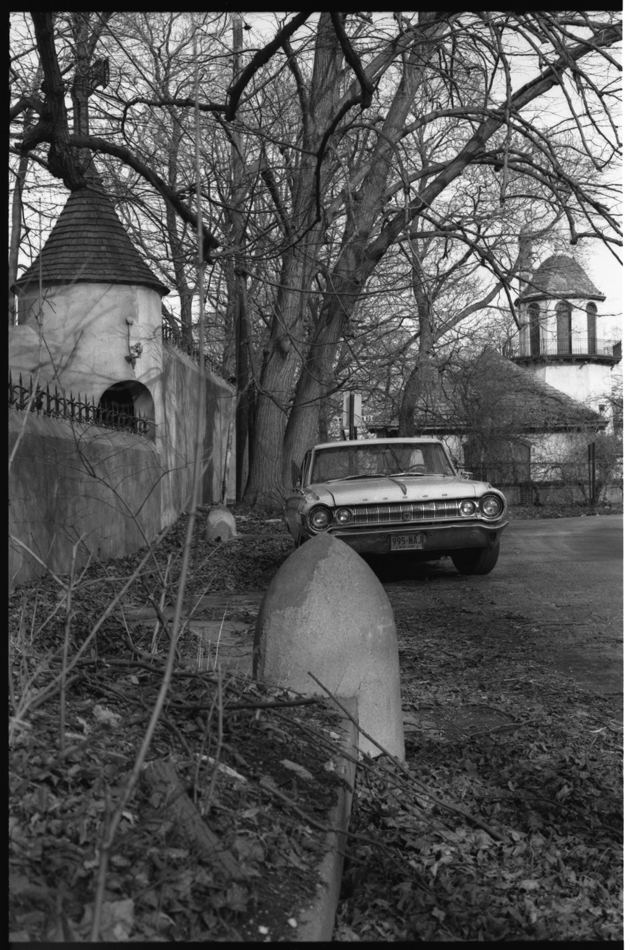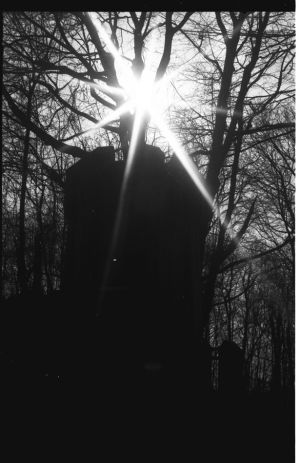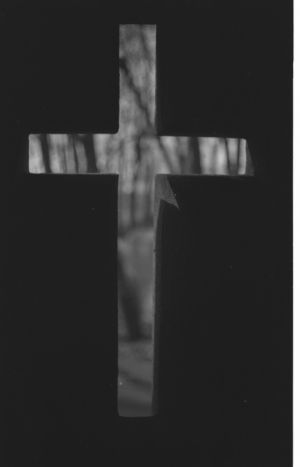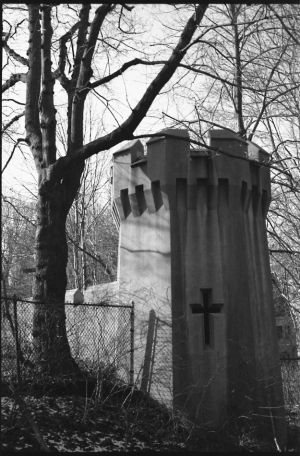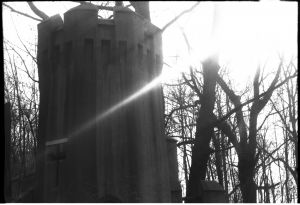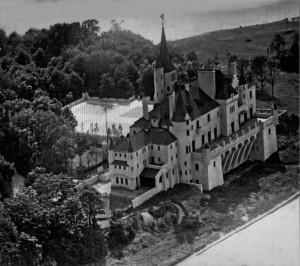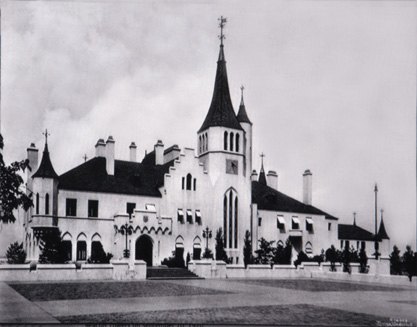.
Here are rare images that I shot over several decades at Sands Point, Long Island, NY, the site of the inspiration for the famous F Scott Fitzgerald novel The Great Gatsby. These feature Daisy & Tom Buchanan’s or Jay Gatsby’s castle, Beacon Towers, Sands Light, and others. Some of these castles are gone now, torn down & lost to time. So take a trip back in time & Enjoy! Read the story below, there’s more to come…
– HKK
.
.
.
.
The Mysteries of the Great Gatsby’s Castles – Beacon Towers and Other Places
Part 1
There are to this day mysteries surrounding F. Scott Fitzgerald’s American classic novel “The Great Gatsby”. Most of these questions are in relation to the original inspiration for this famous fiction. Literary scholars believe that the following two actual mansions were the inspiration. The Jay Gatsby castle was in reality the property of William K Vanderbilt Jrs.’ Mother, and was called “The Beacon Towers”. The other East Egg mansion, also located in Sands Point, Long Island New York, called “Lands End”, was John Scott Browning’s and was a Stanford White design. “Lands End” being the novel’s home of Daisy and Tom Buchanan. In reality, F. Scott Fitzgerald did live across Manhasset Bay from both of them, in a guest cottage of a Great Neck Estate. He was well-known and well-documented to have been an invited guest, along with his wife Zelda to many famous wild parties that the prohibition 1920s are known for.
The Beacon Towers known as Sands Light owner and co-designer was Mrs. Alva Vanderbilt Belmont. Her son “Willy K” Vanderbilt is the world famous owner operator of the Long Island Vanderbilt Cup Auto Races. This amazing castle was located off the Long Island Sound in Sands Point. In 1917 Alva, then widowed from her second husband O.H.P. Belmont for nine years, then commissioned Richard Howland to design this Gothic fantasy castle. One of the mysteries to myself and others is why, after only a few short years, she sold the castle to William Randolph Hearst? He of course was the newspaper mogul and also the inspiration for the 1941 motion picture Citizen Kane. In that multi-dimensional film the Kane/Hearst estate is depicted in opening establishing shots from footage from another Long Island, New York Gold Coast estate the “Oheka” castle in Huntington. It was 1927 when Alva Vanderbilt Belmont sold Beacon Towers to William Randolph Hearst. Then some 45 years later in 1942, after living as might be expected a very private existence, Mr. Hearst sold this mega-castle for various reasons. The most colossal reason being the long ongoing construction (from 1919 to 1947!) of his dream castle project on the other coast in San Simeon, California. The name of this construction was of course “The Hearst Castle”, also known as Xanadu in the movie Citizen Kane. Hearst formally named his California estate “La Cuesta Encantada” (“The Enchanted Hill”), but usually called it “the ranch”.
Unfortunately five years after Hearst sold the castle to a real estate company and only 30 years after the Beacon Towers estate was hand-crafted by European artisans, they destroyed it in 1946 to build a new residence. In 2011 the New York Times reported “The mansion that was said to be the inspiration for the Gatsby home was leveled decades ago. However remains of the estate still remain intact in their original condition, including the gatehouse, carriage house, the beach sands lighthouse, and shore light tower”. And best of all, the same tower that is included in my Gallery showing of the famous “Sands Light Tower” described by F Scott Fitzgerald as the atmospheric green light. In 1982 I returned to this tip of land with my 1964 Dodge, I had driven through this place many times before, but on this visit I came to do a photographic shoot of it’s fantastic moody atmosphere that was a trip back in time and place. Unknown to me at that time was the amount of historical significance of the surviving architecture.
So if the current Jay Gatsby, Leonardo DiCaprio, gets to view my gallery site, I invite you and all of you reading this post to travel back in time and space to these “Real McCoys” of America’s “Roaring ‘20s” architectural art. It would be a perfect fit for an excellent display in a 20” x 30″ multi-image collage or a large single mounted image. So Leo, comment as you see fit…!
To Be Continued…
.
.
.
.
The Mysteries of the Great Gatsby’s Castles – Beacon Towers and Other Places
Part 2
The forward to Mark Twain’s book “The Prince and the Pauper” reads as follows: “It may be history, it may be only a legend, a tradition. It may have happened, it may not have happened: but it COULD have happened.”
Another one of the mysteries of The Great Gatsby is who was the inspiration for Jay Gatsby and how did he become so successful? It is said in the old south that there once was an overnight millionaire by the name of George Remus, a successful criminal as well as defense attorney and also a pharmacist. It made for a good combination to come up with the very unique idea to find legal ways to profit in the Prohibition Age law known as the “Volstead Act”. Within those laws there was one that stated that pharmacists could distribute the then outlawed alcohol beverages for medicinal purposes with a Doctor’s recommendation and a prescription. Mr. Remus soon went on to dominate 80% of the U.S. alcohol consumption during Prohibition. In three years he made over $40 million, equivalent to one half of a billion dollars today. Many believe that his lavish lifestyle and extravagant parties were the inspiration for Fitzgerald’s character Jay Gatsby. Another candidate could be a bootlegger named Max Gerlach, who seems to be the inspiration for Jay Gatsby’s oft used phrase “Old Sport”.
One of the other mysteries that involve Jay Gatsby is automotive related. In the many film versions of the novel it is shown that Jay loved luxury cars, but he could not have been driving any of these models depicted in the films …not one of them. In the recent Leonardo DiCaprio version, he is driving a 1929 Duesenberg Model J. The problem is the story was set in year 1922. F Scott Fitzgerald was clear that Jay Gatsby had a predilection for English luxury to bolster his claim of having attended Oxford University, and, of course, owning a Rolls-Royce. “On weekends”, Fitzgerald wrote, “His Rolls-Royce became an omnibus bearing parties to and from the city between nine in the morning and long past midnight…” The Rolls-Royce most likely would have been a 1922 Silver Ghost, which was grandiose enough to serve as a bus. Baz Luhrmann’s recent adaptation could have used the yellow Rolls-Royce Phaeton 1 that Robert Redford drove in the 1974 film version of the book. But those filmmakers didn’t get it quite right either. The1922 Rolls-Royce produced at the company’s Springfield, Massachusetts plant was made only with right hand drive steering. Mr. Redford’s film Rolls was a left drive model. “it was also a 1928 left-hand drive was optional in 1923 and became standard in 1924 at the Springfield plant” Kristina Marchetto a spokesman for Rolls-Royce said in an email. “Hagerty”, a vintage, collector and antique auto insurance company, could not resist poking fun at the filmmakers for their choice of Gatsby’s vehicles (like a 1930 Buick in the most recent film). “While F Scott Fitzgerald’s Gatsby lived in the literary world of 1922, Hollywood’s Gatsby seems to be an auto enthusiast from the stock market crash year of 1929. Driving vehicles that didn’t exist when the novel was first published in 1925”, the company said in a news release. And to top it off the Duesenberg in the new movie was also a fake. It was made in Wisconsin in 1983 and has a fiberglass body and a Ford V-8. Filmmakers had bought that car and another replica Duesenberg from the Volo Auto Museum in Volo, Illinois and shipped them to Australia, where the film was shot. “Both cars were repainted and modified to look identical, to portray the same car on the screen. Said Brian Grams, the Volo Museum’s Director. Although it is generally assumed that the yellow car that hit and killed Myrtle Wilson was a Rolls-Royce, there certainly are ambiguities in the text.
But one thing is for sure, there was not much of a chance for the original Jay Gatsby to be driving a 1929 Duesenberg in an authentic historic fiction. Then again, as Mark Twain once wrote, “… but it COULD have happened”.
To Be Continued…
.
.
.
.
Images of The Mysteries of The Great Gatsby’s Castles
Copyrighted 2014 by HKK Productions Inc
.
.
2 Images of The Beacon Towers from Fairchild Aerial Surveillance
.

